2014 has been a banner year for baking cookbooks, especially these last couple of months when several of pastry’s most respected and beloved authorities released new, major works. My nightstand is groaning underneath the weight of these books and my kitchen has been in constant action as I’ve happily baking through new recipe after new recipe. I’ll be sharing a best-of list in the next week or so, but I also wanted to highlight a few cookbooks that deserved their own, dedicated post. First up is Rose Levy Beranbaum’s The Baking Bible :
If you’re a serious baker, chances are you have The Cake Bible , or The Pie and Pastry Bible
on your bookshelf. Rose’s rigorously tested and meticulously documented recipes fulfilled the dreams of many a Type A, obsessive baker like myself, who fell in love in baking because I believed that if you followed the recipe directions correctly you should get a perfect cake or pie crust every time.
Of course, it’s not quite as simple as that, but in baking, having a good recipe you can trust can make the difference between opening that oven door nervously or with anticipation. When I look at Rose’s cookbooks, I can feel her confidence in the pages that comes from knowing the recipes backwards and forwards. She’s the kind of baking expert you want when you’re trying to figure out how to get your cake to come out right.
I had the pleasure of seeing Rose speak in San Francisco recently; she was on a pastry chef’s dream-team panel that included Alice Medrich and Emily Luchetti – a baker’s heaven, to be sure. They spoke about their backgrounds, their long careers in pastry, and of course their most recent cookbooks.
It might come as a surprise to find out that Rose considers herself a savory chef at heart; her move to pastry actually stemmed from her desire to reduce the amount of sugar she found in baked goods everywhere. I think that’s part of the reason why her recipes are adored, not just because they’re tested and reliable, but because they are designed to bring out the true character of each particular item, not just drown it in a tide of sugar and butter. If you’ve ever had a cookie, or slice or cake or pie, and exclaimed, “I never knew this was what it supposed to taste like!” – this is what Rose’s recipes aim for.
The Baking Bible combines her trademark attention to detail with a collection of recipes new and updated that cover almost every baking category, from pies to yeast breads to cakes to candy. Almost every recipe has commentary on how she refined the recipe or tips to streamline the process. There are also countless bits of advice scattered throughout the book as well, from mixing methods to why she believes in weighing eggs for the most precise results (Rose actually went into great detail about this during the talk; proof that you can never leave any variable unaccounted for in baking!) For any student of pastry, who wants to understand the hows and whys behind baking, this is indeed a baking bible.
After the talk, I had the lucky chance to follow up with some questions to Rose through e-mail. Below, her thoughts about her new book and baking in general.
You’re known as one of the most meticulous bakers around and your recipes are thoroughly tested to be as foolproof as possible. Still, as you’ve mentioned there are so many variables to keep track of and people always fear if their eggs are too cold or they overbeat the butter their dessert won’t turn out. What are your suggestions for some types of recipes for people just getting started with baking or who are afraid of baking failure?
RLB: Here are a few recipes that have more allowance for possible minor deviation. that said, almost all the recipes are quite easy if one is willing to following the directions as all the details for success are listed in each recipe: the fudgy pudgy brownies, molasses cakelets, the cream cheese cake, the molasses cookies and many of the other drop cookies, and all the scones.
You mentioned that if you had been able to include everything you wanted in the Baking Bible it would be twice as long as it is. How did you decide what to keep and is some of the material left out going to make it into another cookbook?
We had a large wedding cake chapter so it was easy to remove the whole thing and save it for a future book. other recipes that took up a lot of book real estate, such as the vacherin, and the l’opera were also removed to use for the future wedding cake book that will include special occasions surrounding the wedding such as the wedding shower and the groom’s cake.
One of the things that motivated me to go to pastry school was that I was obsessed with finding the perfect chocolate cake recipe, the perfect pie crust recipe, etc. You’ve written so many cookbooks on finding the best iteration of so many baked goods. What motivates you to go back and revisit, perhaps tweak a recipe you’ve spent so much time refining previously?
New technology and availability of specialty ingredients so often leads to the creation of new recipes. occasionally a magazine request for a recipe such as the perfect pie crust leads to retesting and the discovery, for example, of replacing the water with heavy cream which resulted in more tenderness and better flavor. the quest for turning a chiffon cake baked in the traditional tube pan into one without a center tube led to the creation of the Renee Fleming golden chiffon and the chocolate cuddle cake. it took 17 tries to get the golden chiffon perfect so i strongly doubt if we will ever need to revisit and tweak that one! another recipe tweaked from the pie and pastry bible is a frozen version of the pecan pie both of which are baked in tart pans. it occurred to me that using a cookie crust would make it possible to serve it frozen, making it seem less sweet and idea for make ahead celebrations. a blogger requested a juicier apple pie and that resulted in a new technique involving thickening apple cider so that the crust still did not get soggy but the filling became jucier. the kouign amann resulted from our travels which generates many new ideas.
You’ve been educating bakers for years. Do you see the same questions and issues coming up, or do you see an evolution in home baking, especially with the internet where people can share information and inspire each other more easily? How do you see the bakers of today compared with when you first started writing and teaching?
I do think that bakers of today are more adventurous and knowledgeable but the one thing that always comes up is the question of substitution, and especially the request for gluten free recipes which is not my specialty so i suggest the many recipes that don’t use flour at all–side-stepping the issue completely. i do however, have an excellent site that specializes in gluten free and vegan recipes recommended on my blog. another important question that comes up, in good part due to the international reach of our blog, is the question of bleached vs unbleached flour. also bloggers often ask about storage times. most are listed in the book but they ask about other people’s recipes where it is not listed.
Here is one of my favorite recipes so far from The Baking Bible, and perfect for your holiday baking: The Ischler, an almond sandwich cookie filled with apricot preserves and chocolate ganache. Although I hadn’t heard of it before, the composition and the ingredients struck a very Austrian tone to me – the delicate, linzer-like cookies, the combination of apricot and chocolate much like the sachertorte, the use of nuts in the dough. Rose praises this as one of the finest cookies of all time, which coming from someone like her merits immediate trying-out of this recipe, I think.
I also like this recipe because it’s a lovely illustration of Rose’s recipe process. The cookie is at its heart your typical sandwich cookie, and all the components are quite simple to make (so don’t be intimidated!). However, it’s all the little refinements that Rose has worked out that make it such an easy project to pull together. The cookie is a soft dough of butter, confectioner’s sugar, and almonds that bakes into a supremely tender-crisp round; as with most of these delicate, butter-rich doughs, they can be a challenge to roll out and manipulate without making a mushy mess. Rose noted that in developing the recipe she tweaked it to include a bit of egg and a little more flour to make it easier to handle. She also includes tips like working the dough inside a plastic bag or under a layer of plastic wrap to prevent sticking.
Rose includes a recipe for making the apricot filling from scratch, but also includes an option using store-bought preserves, which the time-challenged (like me) will welcome. The ganache is also a two-ingredient cinch, so making these cookies took me less than half a day, with most of the time spent letting the dough chill in the refrigerator. Because of the thoroughness and precise of Rose’s instructions, I never had any confusion about how long any step would take or what result I should be expecting.
These cookies are delicate and delicious, with a definite European sensibility. The combination of sweet jammy apricots and dark chocolate is a I feel like I should be eating these in a Viennese kaffehaus, but they’re a definite winner on my Christmas cookie plate.
- from Rose Levy Beranbaum's The Baking Bible
Cookie
- 16 tablespoons (227 g) unsalted butter, cold
- 1 cup plus 2 tbsp (132 g) confectioners' sugar
- 2 cups (200 g) sliced almonds, preferably blanched
- 1/2 large egg, lightly beaten
- 1 teaspoon vanilla extract
- 1 3/4 cups plus 1 tbsp (220 g) bleached all-purpose flour
- 1/4 teaspoon sea salt
Chocolate Ganache
- 8 ounces (227 g) bittersweet (60%-62%) chocolate, roughly chopped
- 2 ounces (58 g) heavy cream
Apricot Glaze
- 1 1/3 cups (412 g) apricot preserves
For the cookies:
- Let butter soften at room temperature to 65 to 75 degrees F. In the meantime, grate the almonds very fine.
- Combine grated almonds, confectioners' sugar, and softened butter in a stand mixer and cream together until light and fluffy, starting on low speed and increasing to medium.
- Scrape down sides of bowl, add egg and vanilla, and beat until blended.
- Whisk flour and salt together in a separate bowl. With mixer running on low, slowly add the flour and mix until incorporated and dough starts to pull away from sides of bowl.
- Turn out dough into a large plastic freezer bag and press dough together, kneading until smooth. Divide dough into four pieces, wrap tightly in plastic, and refrigerate for at least 2 hours to let firm up.
- Twenty minutes before baking, preheat oven to 350 degrees F. Line a couple baking sheets with silicone baking mats or parchment paper.
- Remove a portion of dough from refrigerator and turn out onto a piece of parchment paper. Let soften for about 10 minutes or until soft enough to roll without cracking. Place another piece of parchment paper over the dough and roll out to about 1/8" thickness.
- Using a 2 1/4" inch round cutter, cut out about 20 cookies. Place on prepared baking sheets about 1/2" inch apart. (If dough is too soft, place back in refrigerator to firm up).
- Bake for 4 minutes, then rotate top to bottom and back to front, and bake for about 4 minutes before, when cookies are starting to brown at the edges.
- Let cookies fully cool on a wire rack before moving.
For the ganache:
- Place chocolate in a heatproof bowl set over a saucepan of simmering water. Stir often until chocolate is fully melted. While chocolate is melting, place cream in a separate saucepan and bring to just under a boil on stove.
- Remove bowl of melted chocolate from heat. Pour warmed cream over chocolate and stir to incorporate. The ganache should drop thickly from a spatula. Set aside in a warm place until you are ready to fill cookies.
For the apricot glaze:
- Place apricot preserves in a small saucepan set over low-medium heat. Bring just to a boil. In the meantime, set a strainer over a heatproof measuring cup lightly coated with nonstick spray.
- Press the hot preserves through the strainer into the cup. You should get about 3/4 cup (333 g) of strained apricot preserves.
- In the microwave, reduce the apricot to about 2/3 cup. It should be very thick but still fluid.
To assemble:
- Using a small offset spatula or butter knife, spread a thin layer of apricot glaze over half on the cookies. Spread the other half of the cookies with a slightly thicker layer of ganache.
- Place the chocolate coated cookies onto the apricot coated cookies. Let sit for about 30 minutes for ganache to fully set.
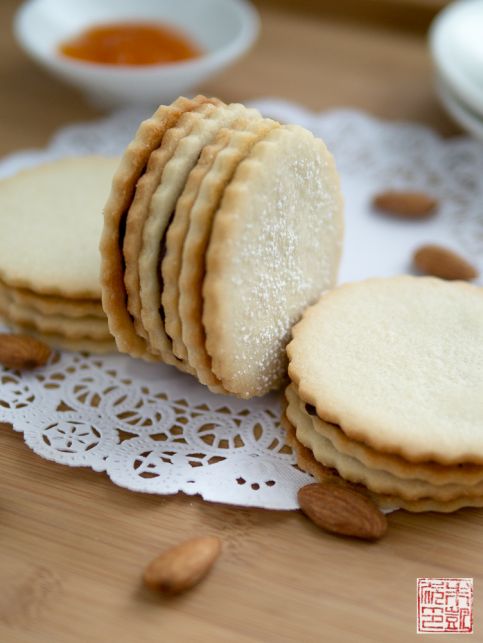
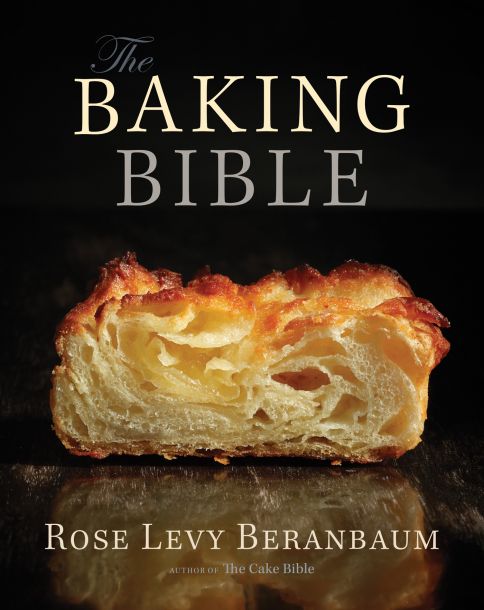
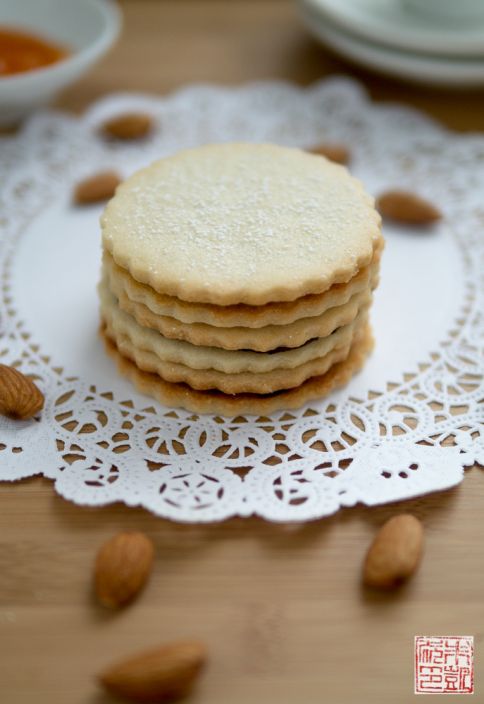
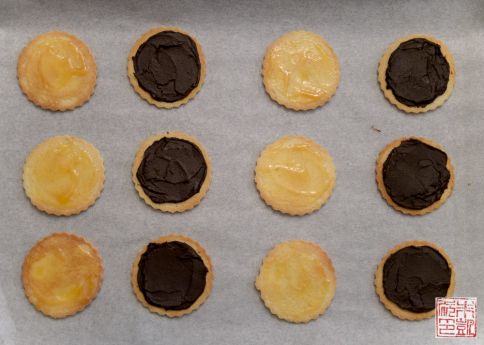
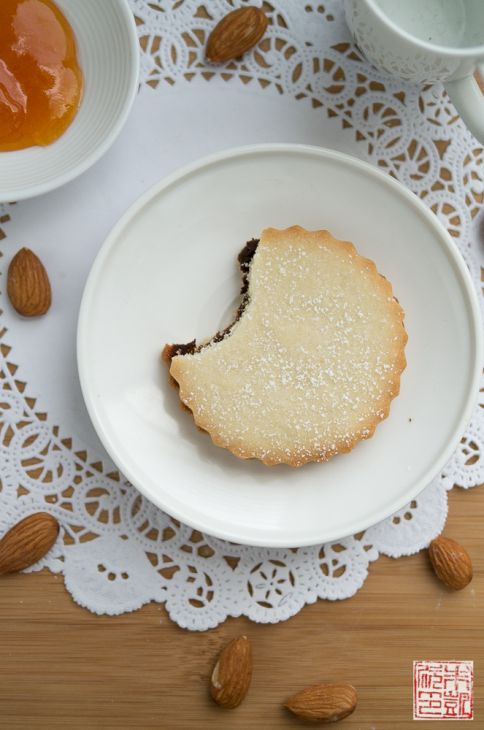
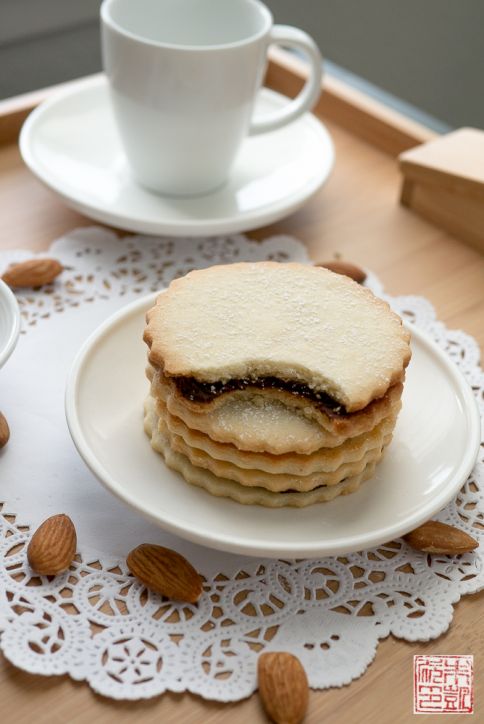


Rose’s cookbooks are always amazing – encyclopedias of baking! These cookies are so pretty to look at and I’ll bet they taste divine.
I recently made almond apricot thumbprint cookies, so I know I would love these. The added chocolate takes it up 100 levels!
The cookies look so delicate and pretty!
I love the Cake Bible and this new one has been on my baking book wish list since I heard about it. She’s so great with details! These cookies look worthy of a special occasion.
I NEED this book for my (already groaning, as well) nightstand! These cookies sound delicious, and thanks for the fun review and interview!
This cookbook is on my wishlist for Christmas!! Looks fantastic!
They look delicious! Perfect for Christmas – thanks for sharing!
Pass me a huge plate of these!! These look perfect!
I wish I was a better baker. This is something I would love to make and your tips will really make that easier!
Those cookies look just delightful!!! I am much more of a cook than baker, but am open to learning more!
These cookies are so pretty! Perfect for Christmas!
What an interesting interview! And absolutely gorgeous cookies, too.
What a gorgeous cookie! You can dress it up or enjoy its simplicity, not to mention they sound delicious!
I’m dying to try this book. I saw it at the bookstore last weekend and was so sorely tempted. I’m even more so now.
I’m not a serious baker, but maybe I should invest in these books since I am working at getting better at my baking. But these cookies are absolutely scrumptious.
I just want to stare at the photos all day long. So pretty, and perfect for the holidays. Love her cookbooks.
These cookies are picture perfect!
Beautiful cookies!
What a beautiful write up – lovely photos too!
Patricia @ ButterYum
http://www.butteryum.org/roses-alpha-bakers/2014/11/6/tbb-the-ischler
Hi pastrygirl!
This recipe came in just as I mentioned I needed some cookies! LOL.
I was wondering what you meant by grated almonds. The recipe calls for sliced ones, then it says grated? Can I just have blanched ones and put them in the chopper?
Hi Ayse,
Sorry I didn’t see this comment until now! Rose’s recipe says to grate the sliced almonds with a grater into fine bits. I think it’s fine to use blanched almonds and process them in a food processor, or just use ground almond meal – it worked fine for me! Thanks!
Anita , I tried this recipe but after adding flour it became like a smooth paste. In the books says its crumble . Do you know where it went wrong?
Thanks
Bin
Hi Bincy,
Did you maybe overmix the ingredients? Eventually you do want the dough to come together so I don’t think it’s wrong for it become smooth. Hope you try it again and it turns out!